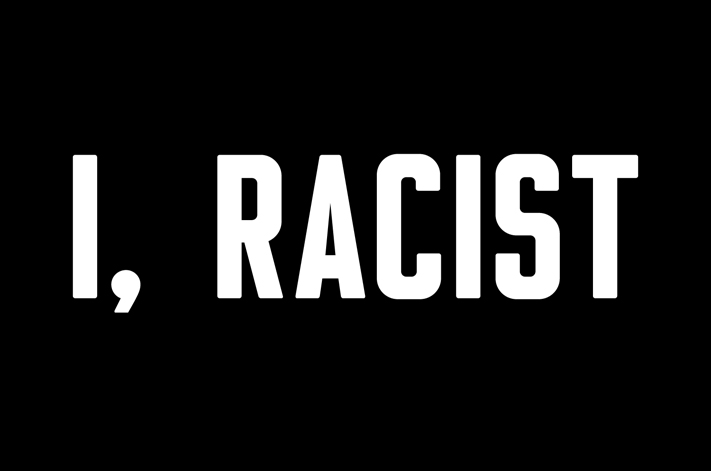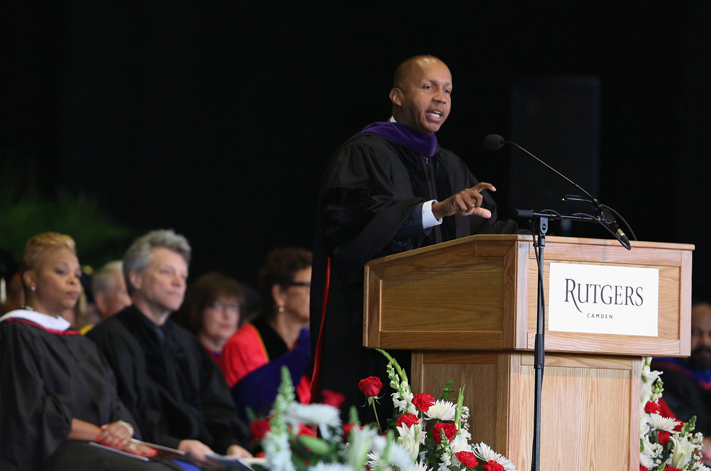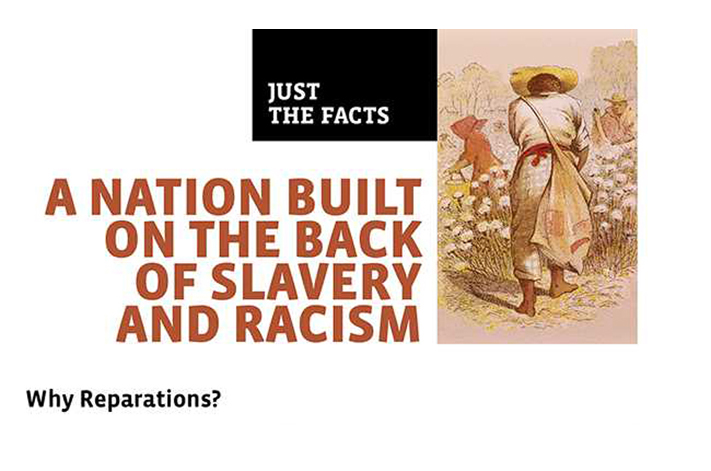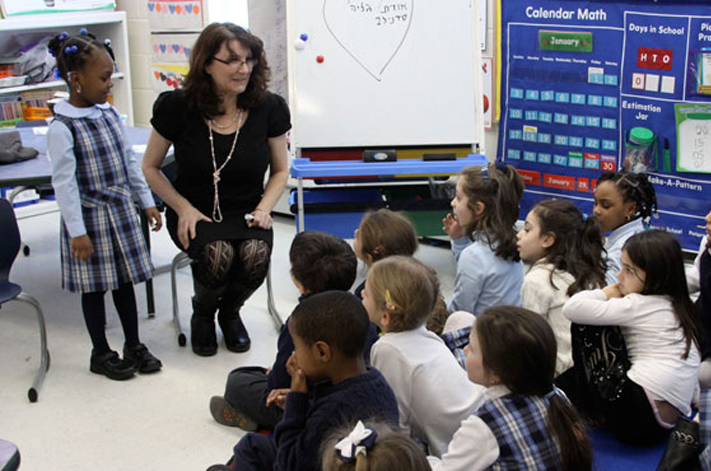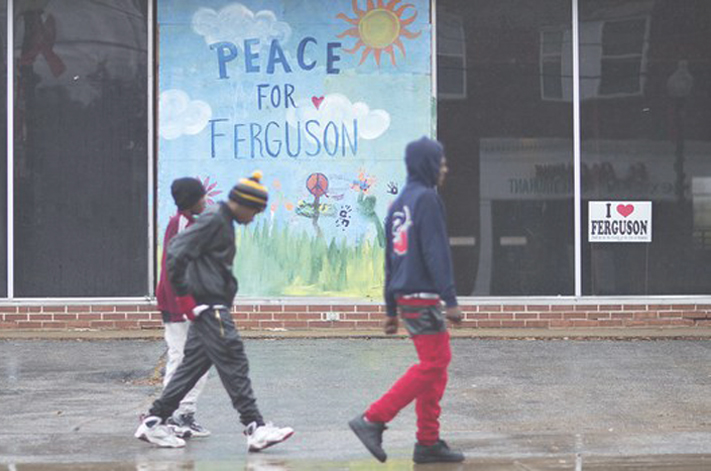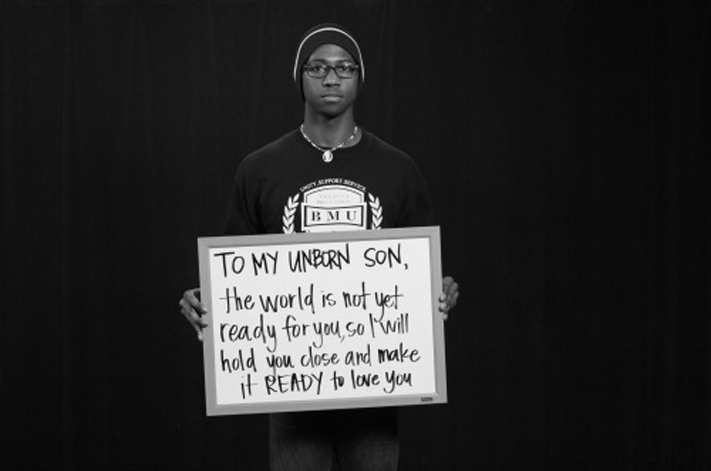Project Description

Originally Published and Downloadable at Academia May 25, 2012 | Liberal Studies Program, Santa Clara University, Santa Clara, CA, USA; Social Science and Comparative Education, University of California, Los Angeles, USA
Many Students of Color have encountered cultural disrespect within their K-12 education in regards to their names. While the racial undertones to the mispronouncing of names in schools are often understated, when analyzed within a context of historical and current day racism, the authors argue that these incidents are racial microaggressions – subtle daily insults that, as a form of racism, support a racial and cultural hierarchy of minority inferiority. Furthermore, enduring these subtle experiences with racism can have a lasting impact on the self-perceptions and worldviews of a child. Using a Critical Race Theory (CRT) framework and qualitative data, this study was designed to explore the racial micro- aggressions and internalized racial microaggressions of Students of Color in K-12 settings in regards to their names. Black, Latina/o Asian American, Pacific Islander and mixed race participants were solicited through various education electronic mail lists, and data was collected through short answer questionnaires and interviews. Coded for emergent themes, the data is organized into three sections: (1) Racial microaggressions and names in school; (2) Internalized racial microaggressions; and (3) Addressing racial microaggressions and internalized microaggressions in schools. This article gives language to the racialized experiences many Students of Color endure. Additionally, it furthers our understanding of racial microaggressions by analyzing the complexity and impact from a multi-racial lens.
Keywords: Critical Race Theory; racial microaggressions; racism; internalized racism; K-12 schools; Students of Color; teachers
When we chose our daughters’ names we wanted to give them something that they could carry with them, something that they could use as strength, as home, in a world that might not always nurture them as we would want it to. We gave them Nahuatl names. We gave them names that were hundreds of years old that carried with them the prayers of their great grandmothers. Names that represented their own spirits, but that also manifested the spirit of their people. We gave them names that we knew would be a challenge at times, and that might even feel like a burden when they just want to blend in.
*Corresponding author. Email: kohli.rita@yahoo.com
ISSN 1361-3324 print/ISSN 1470-109X online
© 2012 Taylor & Francis
http://dx.doi.org/10.1080/13613324.2012.674026
http://www.tandfonline.com/
But we needed them to know that they come from somewhere and that this is their strength, their power, and the representation of our own hope for their futures, and for those of the children they will some day have. We gave them what we could, names that are truly theirs, Xóchitl (flower) and Citlali (Star). (Marcos Pizarro)
One of the authors, a Chicano, attended fifth grade in East Los Angeles in 1960. Most immigrant students at the school did not outwardly maintain an ethnic or linguistic identity with their countries of origin; however, one student named Freddie Galán1 was different. His family was from Mexico, and he was raised to love the Spanish language and all of its manifestations, including the pronunciation of his name. Freddie felt comfortable speaking Spanish in public; he was the translator for his parents in school as well as other public spaces. He also insisted that his name was pronounced correctly.
Young 10-year-olds can be hard on each other, and in order to push Freddie’s buttons, his classmates would pronounce his name ‘Gallon’ – like a gallon of milk. This would drive Freddie crazy! He would always correct everyone with ‘no, it’s Galán.’ In the Chicana/o movement of the 1960s and 1970s, correct Spanish pronunciation of names, terms, and foods was part of establishing a positive ethnic and linguistic identity. Freddie was ahead of his time and it is only now, as we write this article, that we realize how rare it is for a 10-year-old to stand up against his peers for something that his parents had raised him to honor – his name. Unfortunately, most kids do not have the tools to defend themselves like Freddie. The other author, a South Asian woman, has a brother named Sharad (shu-rudth). Although his name is common in India, non-South Asians often struggle with the pronunciation.
Growing up in the late seventies and eighties in predominantly white suburbs, Sharad had many uncomfortable incidents in regards to his name. He signed up for soccer when he was in second grade and when he arrived at practice he had been placed on the girl’s team with the explanation, ‘Oh! We thought it was Sharon.’ When he was in the ninth grade, a teacher mispronounced his name as Sharub in front of a class of students. After that day, both the teacher and the students decided it was easier to call him Shrub, and this lasted for the rest of high school. These incidents may seem minor, but because of experiences like these, Sharad developed anxiety and even resentment around his name. While today he has grown to embrace it, the struggles he and many other children with non-Western names experience is real, and can have a deep impact on the way they see themselves and their culture.
In 2009, in a middle school classroom in California, a bright, spunky seventh grader was overheard saying to her friends, ‘I’m Natália!’ Later when she introduced herself, she said her name was Natalie. When questioned about having said Natalia earlier, she said ‘Yeah, yeah. Teachers always say my name wrong. They say Na-tail-ia, and I hate it. It sounds so ugly, so I tell them Natalie.’ To some, this incident may seem like a passing comment. However, based on teachers’ inability or unwillingness to correctly pronounce her name, Natália did not feel her culture was valued and thus, changed her name. For many Students of Color, a mispronunciation of their name is one of the many ways in which their cultural heritage is devalued.
Each of these children, in different school contexts over the last 50 years, encountered cultural disrespect in regards to their names. While the racial undertones to the mispronouncing of names in schools are often understated, we argue that these are racial microaggressions – subtle daily insults that, as a form of racism, support a racial and cultural hierarchy of minority inferiority (Smith, Yosso, and Solórzano 2007). Using a Critical Race Theory (CRT) framework and qualitative data, this article highlights these racial microaggressions to further our understanding of the complexity of racism, as well as to give language to the experiences many Students of Color endure.
History of racism in schools
To understand the impact of something as seemingly minor as the mispronunciation of a name, it is important to view these acts within a larger con- text of racism in schools. Historically, our education system has transmitted a hierarchy that prioritizes and enforces majority culture (Woodson 1933; Nakanishi and Nishida 1995; Bell 2004). As early as the eighteenth century, Americanization schools for Native Americans and Mexicans worked to strip indigenous people of their language and culture, and replace it with English, European clothing and Eurocentric cultural values (Zitkala-sa 1921; Ferg-Cadima 2004). In the 1880s, segregated school settings were often sites for discarded curriculum from white schools, used to promote the dominant culture to African American, Latino and Asian American students (Woodson 1933; Nakanishi and Nishida 1995). With the Great Migration in the early twentieth century, urbanization prompted many Blacks to the north and immigrants to US cities (Lemann 1982; Berlin 2010). Anglo-Saxon Protestant whites were in power, and felt that the status quo could be best achieved through the standardization of education (Tyack 1974; Jacobson 1998, 2006; Gerstle 2001). Educators were encouraged to use curriculum and pedagogy to assimilate all students to white, Anglo-Saxon Protestant ideals (Kaestle 1983; Gerstle 2001).
As we move into the twenty-first century, assimilation and a racial hierarchy are still a part of the schooling process. While standardization is now used to hold districts accountable to providing quality and equal education (Liebman and Sabel 2003); because state standards are not truly multicultural, curriculum continues to promote predominantly Eurocentric, upper-class perspectives (Perez Huber, Johnson, and Kohli 2006). Poor and minority families are forced to send their children to schools that frequently do not match their needs or belief systems. Instead, schools uphold the value system of the dominant culture in many ways, including an unequal distribution of resources, a lack of diversity in the teaching force, and limited representation of minority groups within the curriculum (Loewen 1996; Delpit 1995; Ladson-Billings 2001; Sleeter 2001, 2008). It is in this context of historical and continued racism that we must under- stand the issue of names and Youth of Color.
The importance of names
As a baby, identity and self-concept are developed through a family’s repeated use of a child’s name (Sears and Sears 2003). A child begins to understand who they are through their parents’ accent, intonation and pronunciation of their name. Additionally, names frequently carry cultural and family significance. Names can connect children to their ancestors, country of origin or ethnic group, and often have deep meaning or symbolism for parents and families. When a child goes to school and their name is mispronounced or changed, it can negate the thought, care and significance of the name, and thus the identity of the child. This happens for white and non- white children alike. However, the fact that this experience occurs within a context of historical and continued racism is what makes the negative impact of this experience so powerful for Students of Color.
The practice of racialized re-naming has been ongoing in United States history. In the seventeenth through nineteenth centuries, because they were seen as property, enslaved Africans were forced to shed their names, and were given the names of their masters (Dillard 1976; Irons 2002). The names of indigenous people were replaced with Anglo and Christian names until the 1920s (Zitkala-sa 1921). While forced re-naming practices have ended, the sentiment that non-white names are an unwelcome inconvenience persists within US society. In 2009, during House testimony on voter identification legislation, a Texas lawyer argued that voters of Asian-descent should adopt names that are ‘easier for Americans to deal with’ (Ratcliffe 2009).
Although not always as blatant as the examples above, racial minority youth continue to experience disrespect to their names within schools. Regardless of whether the name of a student is intentionally disregarded, or a teacher accidentally butchers the pronunciation during roll call, we argue that the cultural mismatch that guides this interaction is a racial microaggression. Using CRT, we frame this experience within a larger context of historical and current day racism.
Critical Race Theory
CRT is used within this study to centralize our analysis of race and racism within education. The framework was developed in the 1970s amongst legal
Scholars such as Derrick Bell, Kimberley Crenshaw and Richard Delgado to highlight race, racism, and its intersections with other forms of oppression. Over the last 10 years, CRT has extended into many disciplines, including education. It is used within this held to heighten awareness about racism and educational inequity. CRT scholars have developed the following five tenets to guide CRT research:
(1) Centrality of Race and Racism. All CRT research within education must centralize race and racism, including intersections with other forms of subordination such as gender, class, and citizenship.
(2) Challenging the Dominant Perspective. CRT research works to challenge to dominant narratives and re-center marginalized perspectives.
(3) Commitment to Social Justice. CRT research must always be motivated by a social justice agenda.
(4) Valuing Experiential Knowledge. CRT builds on the oral traditions of many indigenous Communities of Color around the world. CRT research centers the narratives of People of Color when attempting to understand social inequality.
(5) Being Interdisciplinary. CRT scholars believe that the world is multi-dimensional, and similarly research about the world should reflect multiple perspectives (Solórzano and Delgado Bernal 2001).
Guided by these five tenets, we use the collective narratives of People of Color to tell a counter-story. The dominant perspective narrates that mispronouncing or changing a child’s name at school is a fairly benign experience. CRT allows us to examine these experiences in a larger context of race and racism and demonstrate how, as racial microaggressions, they can take their toll on Students of Color. If a child goes to school and reads textbooks that do not reference her culture, sees no teachers or administrators that looks like her, and perhaps does not hear her home language, the mispronunciation of her name is an additional example for that student that who they are and where they come from is not important. Furthermore, the cumulative impact of these subtle experiences with racism can have a lasting impact on the manner in which youth see themselves, their culture and the world around them. Thus, we write this article to name one of the many forms of racism that Students of Color experience in schools, as well as to urge teachers to prevent further similar experiences and create classrooms where all children feel safe, visible, valued and celebrated.
Racial microaggressions
Although racism is tied to race, it is not always acted out based on racial categories; it also enacted based on factors affiliated with race such as language, immigration status and culture (Kohli 2009). Many scholars have well theorized the intersections of race with other forms of subordination in our society (Crenshaw et al. 1996; Dixson and Rousseau 2006). LeMoine (2007) has extensively tied race to language discrimination by documenting the differential treatment of White and Black French speakers. Scholars have demonstrated links between race and class discrimination, revealed the varied treatment of the first, predominantly wealthy and white wave and the second mostly poor and darker skinned wave of Cubans immigrants in the United States (Portes and Rumbaut 2001). When we analyze racism, it is important to acknowledge the complexity and intersectionality of its manifestations.
It is also important to understand racism beyond blatant or overt acts of discrimination. There are more subtle forms of racism that exist in daily life, which may be hard to pinpoint as racism, but cause harm nonetheless. CRT scholars have labeled this form of racism racial microaggressions (Author, 2007). To exemplify the concept, Davis (1989) takes readers on a brief elevator ride and describes the following incident:
The scene is a courthouse in Bronx, New York. A white assistant city attorney ‘takes the court elevator up to the ninth floor. At the fifth floor, the doors open. A black woman asks: “Going down?” “Up,” says
These [racial] assaults to black dignity and black hope are incessant and cumulative. Any single one may be gross. In fact, the major vehicle for racism in this country is offenses done to Blacks by Whites in this sort of gratuitous never-ending way. These offenses are microaggressions. Almost all black–white racial interactions are characterized by white put-downs, done in automatic, preconscious, or unconscious fashion. These minidisasters accumulate. It is the sum total of multiple micro aggressions by whites to blacks that has pervasive effect to the stability and peace of this world (Pierce 1974, 515).
We borrow from the collective work of Pierce as we continue to define and understand racial microaggressions for not just African Americans, but for all People of Color. Through analysis of data from previous research, we have come to the realization that those who are racially marginalized often experience racism in both overt and covert ways (Allen and Solórzano 2001; Smith, Yosso, and Solórzano 2007; Solórzano 1998; Solórzano, Allen, and Carroll 2002; Solórzano, Ceja, and Yosso 2001; Yosso et al., in press). While we know that overt forms of racism still exist, we focus here on those covert or everyday forms of systemic racism used to keep those at the racial margins in their place. Therefore we argue that racial micro aggressions are:
- Subtle verbal and non-verbal insults/assaults directed toward People of Color, often carried out automatically or unconsciously;
- Layered insults/assaults, based on one’s race, gender, class, sexuality, language, immigration status, phenotype, accent, or name;
- Cumulative insults/assaults that take their toll on People of Color. In isolation, racial micro aggressions may not have much meaning or impact; however, as repeated slights, the effect can be profound.
To understand racial microaggressions, it is important to explore four related areas. First, we must examine the different types of racial microaggressions that People of Color experience. Second, it is important to consider the various contexts in which racial microaggressions occur. Next, we need to understand the effects of racial microaggressions on the person on the receiving end. Finally, we need to know how People of Color respond to racial microaggressions. Figure 1 provides a visual rendering for understanding racial microaggressions:
In general, racial microaggressions can span from a passing comment on an elevator about the intellect of your racial community, to a friendly inquiry from a co-worker asking, ‘Where are you really from?’ For the purposes of this article, the types of racial microaggressions we are exploring involve the names of Youth of Color, and examine these racial slights in context of schools. We want to highlight the experiences of Students of Color, when they walk into first grade and their teacher says, ‘Ooh, this name is hard to say!’ or ‘Your name is very long, do you have a nickname?’ We are attempting to show how these subtle comments are actually racial slights. Often unconscious and unintentionally hurtful, when these comments are made to Students of Color, they are layered insults that intersect with an ‘othering’ of race, language and culture. By connecting the occurrences of multiple racial and ethnic communities, ages and geographic contexts in the US in the analysis of this article, our goal is to demonstrate the racialized nature of these occurrences, and gain a deeper understanding of the effect of these acts on students and their response to these events.

Figure 1. A model for understanding racial microaggressions.
Color, when they walk into first grade and their teacher says, ‘Ooh, this name is hard to say!’ or ‘Your name is very long, do you have a nickname?’ We are attempting to show how these subtle comments are actually racial slights. Often unconscious and unintentionally hurtful, when these comments are made to Students of Color, they are layered insults that intersect with an ‘othering’ of race, language and culture. By connecting the occurrences of multiple racial and ethnic communities, ages and geographic contexts in the US in the analysis of this article, our goal is to demonstrate the racialized nature of these occurrences, and gain a deeper understanding of the effect of these acts on students and their response to these events.
Internalized racial microaggressions
The impact of racism does not end once the experience is over. It can some- times be brushed off or forgotten, but it can also have a profound effect on the way an individual sees themselves, their culture and the world around them (Steele 1997). Internalized racism is a concept that has been widely theorized throughout the years amongst activist Scholars of Color (Woodson 1933; Haley and Malcolm X 1964; hooks 2001); however, empirical research on internalized racism is very limited, particularly in the field of education (Cross 1971; Cokely 2002). Perez Huber, Johnson and Kohli (2006) define internalized racism as the conscious and unconscious acceptance of a racial hierarchy. Internalized racism goes beyond the internalization of stereotypes about People of Color, but rather is the internalization of the beliefs, values, and worldviews of the dominant culture.
In addition to highlighting the disrespect of names in the schooling experiences of Students of Color as a racial microaggression in this study, we also demonstrate the lasting impact this racism can have on the students who endure it. By linking research on racial microaggressions and internalized racism, we are furthering the field by drawing attention to the damage People of Color experience when they begin to accept subtle, daily, racialized insults as reality.
Our working label of this form of internalized racism is internalized racial microaggressions. Because racial microaggressions are often commonplace and so rarely diagnosed as an affirmation of dominant racial and cultural power, the ability for this form of racism to penetrate the psyche is profound. Growing up, we have heard comments such as, ‘Wow, you speak English so well!’ or ‘You don’t have an accent at all!’ It may seem easy to dismiss these comments as ignorant. However, the cumulative effect of hearing these comments repeated again and again, and coupled with numerous, similar comments or ‘jokes’ such as ‘Affirmative action must still be in place,’ or ‘You’re not a terrorist are you?’ we begin to hear a message that we do not belong. It is unjust when People of Color are forced to endure these statements based on phenotype or culture. However, these racial microaggressions present the greatest danger when the victims start to believe the message, and begin to doubt their place or cultural worth in US society. This can impact their aspirations, motivation, and love for their culture and themselves. This article begins to conceptualize internalized racial microaggressions through the example of names and K-12 schooling.
Read the Full Report: Teachers, Please Learn Our Names!


